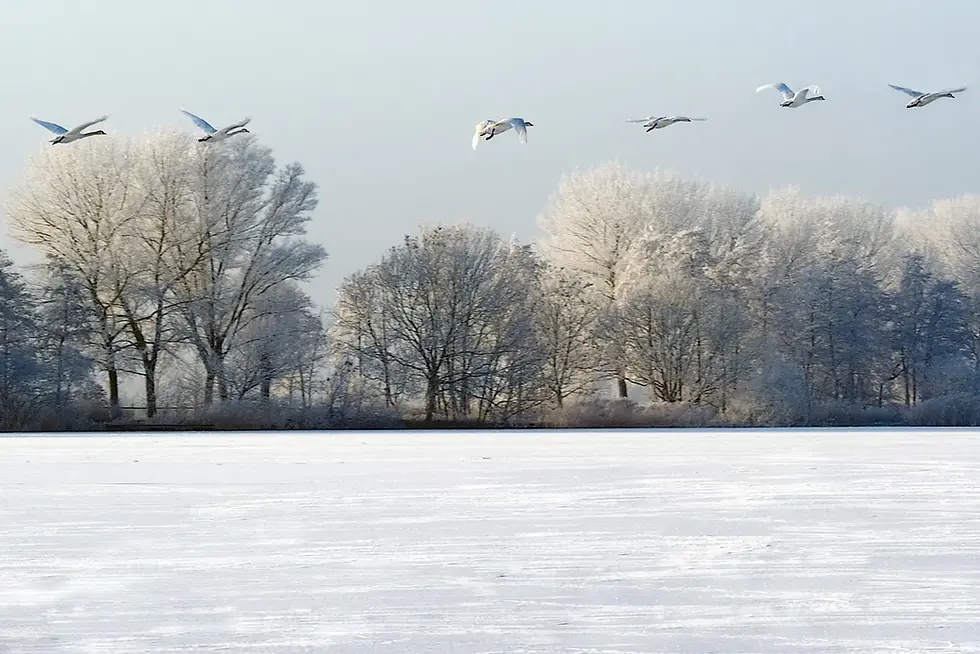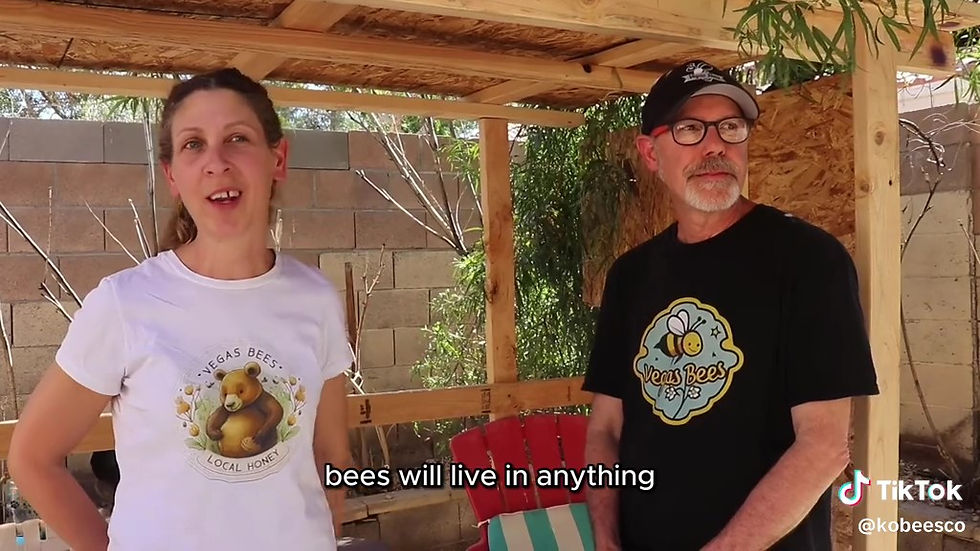
The Birds and the Bees: A Majestic Dance of Nature's Pollinators
Step into the captivating world of nature’s most vital performers—birds and bees. Far from just a euphemism for human reproduction, this phrase reflects the delicate balance of ecosystems, where these winged creatures play a crucial role in sustaining plant life through pollination.
Let’s explore the intricate dance between birds, bees, and the flora they nourish, ensuring the survival of countless species, including our own.
The Birds: Aerial Artistry with Purpose
Adorned in vibrant plumage and armed with melodious songs, birds have long enchanted us. But beyond their beauty and charm, many species of birds are essential pollinators, helping maintain the biodiversity of our planet.
Bird species like hummingbirds, sunbirds, and honeyeaters are experts at this task. They dart between flowers, sipping nectar and inadvertently transferring pollen as they feed.
These birds are particularly drawn to brightly colored, tube-shaped flowers, where their slender beaks can easily access the nectar inside.
Take the hummingbird, for example. This tiny marvel beats its wings up to 80 times per second, hovering with unmatched agility as it sips from flowers. As the bird feeds, pollen dusts its head and bill, which it then carries to the next bloom, fertilizing plants and enabling the production of seeds and fruit.
The hummingbird's high-energy lifestyle makes it a key player in ecosystems, supporting plant species that provide food and habitat for countless other organisms.
The Bees: Tireless Earthbound Pollinators
If birds are the virtuosos of the sky, bees are the unsung heroes of the earth. Their contributions to agriculture and biodiversity cannot be overstated.
As they buzz from blossom to blossom, bees collect nectar and pollen to sustain their colonies, while also providing an indispensable service to the environment—pollination.
Bees are responsible for pollinating roughly one-third of the world’s food crops, from apples and almonds to tomatoes and blueberries. Their fuzzy bodies and slight electrostatic charge attract pollen grains, which stick to them and are carried from flower to flower, ensuring that these plants can reproduce.
While the European honeybee is the most well-known, there are over 20,000 bee species, each with unique behaviors and adaptations. Bumblebees, for example, engage in "buzz pollination," where they vibrate flowers to release more pollen, especially in crops like tomatoes.
Native bees, such as mason bees and leafcutter bees, often outshine their more famous honeybee cousins when it comes to pollination efficiency.
Mason bees, for instance, are 100 times more efficient at pollinating fruit trees than honeybees, as they don’t groom the pollen off their bodies, allowing more to be transferred between blooms.

The Symbiotic Waltz: A Relationship Built on Survival
The intricate dance between birds, bees, and plants is a shining example of symbiosis—a mutually beneficial relationship that has evolved over millions of years.
Flowers provide nectar as a food source, while birds and bees ensure the plants’ genetic lineage by transporting pollen. This co-evolution has shaped the physical traits of both pollinators and flowers.
Plants have evolved bright colors, strong fragrances, and specialized shapes to attract specific pollinators. Some orchids, for example, have long nectar spurs that can only be accessed by moths with equally long proboscises.
In turn, pollinators have developed specialized beaks, tongues, or feeding behaviors to maximize their efficiency.
Beyond Birds and Bees: Pollinators Come in Many Forms
While birds and bees often take the spotlight, they’re far from the only players in nature’s pollination ballet. Bats, butterflies, moths, beetles, and even certain mammals contribute to pollination.
In fact, bats pollinate over 500 species of plants, many of which produce vital crops like bananas, mangoes, and guavas. Night-blooming flowers, such as the agave plant, rely on bats to transfer pollen as they feed on nectar.
Butterflies and moths, with their delicate flight and keen sense of smell, are also key pollinators, particularly in wildflower habitats. Many moths are nighttime pollinators, drawn to pale or white flowers that open in the evening.

Urbanization: Shrinking Habitats and New Challenges
As cities expand, the natural habitats of birds, bees, and other pollinators are rapidly shrinking. Urbanization introduces a range of challenges, from habitat loss to pesticide exposure.
Concrete jungles often lack the diverse, native plants these creatures rely on for food and shelter, making it difficult for pollinators to thrive in built-up environments.
However, there's hope. Urban spaces can be transformed into pollinator-friendly environments. Rooftop gardens, green walls, and urban parks filled with native, nectar-rich plants can provide essential habitats.
Even small backyard gardens can make a significant difference. By planting a variety of flowers that bloom at different times of the year, homeowners can create a continuous food source for pollinators, helping them survive in urban areas.
Conservation Efforts: Safeguarding Pollinators’ Future
The dance of pollination is under threat due to habitat destruction, pesticide use, and climate change. Fortunately, numerous conservation efforts are underway to protect these essential creatures.
Habitat restoration projects aim to reintroduce native plants and flowers to areas where they’ve been lost. Reduction of pesticide use, particularly neonicotinoids, is another crucial step, as these chemicals are linked to bee population declines.
One successful initiative is the "Bee Highway" project in Norway, which provides continuous corridors of wildflowers through urban areas to support bee populations.
In the U.S., the Xerces Society has been pivotal in protecting endangered bee species and promoting pollinator-friendly agricultural practices.

How You Can Help: Inviting Pollinators to Your Garden
You don’t need to own vast stretches of land to make a difference for pollinators. By creating a pollinator-friendly garden in your backyard, you can offer birds, bees, and other pollinators a safe space to feed, nest, and thrive.
Consider planting native flowers, which are better suited to local pollinators’ needs. Include plants that bloom at various times, so there’s always a food source available.
Avoid using pesticides, and provide water sources like bird baths or shallow dishes with pebbles for bees to rest and drink.
The Priceless Contribution of Pollinators
Beyond their ecological roles, pollinators have enormous economic importance. In the U.S. alone, bees contribute an estimated $15 billion annually to agriculture through pollination services.
Without them, many of the crops we depend on would either fail to thrive or require expensive artificial pollination.
The loss of pollinators would have far-reaching consequences for global food production, ecosystems, and biodiversity. That’s why the work of conservationists, beekeepers, farmers, and everyday citizens is so critical to ensuring their survival.
Conclusion: Protecting the Dance for Future Generations
The birds and the bees, along with countless other pollinators, are essential to life on Earth. They enable the growth of plants, which feed humans and animals alike. As stewards of the planet, we must ensure that this timeless dance continues.
By understanding the roles of pollinators and taking steps to protect them, we can help preserve the natural world’s beauty and functionality for generations to come.
Betsy and Pete
Las Vegas, Nevada
About Us: The Authors

We're Betsy and Pete, passionate Las Vegas beekeepers trained by a master in the field. With hundreds of successful bee and bee swarm removals under our belts, we're not just experts; we're enthusiasts committed to the well-being of these incredible pollinators.
We manage dozens of beehives, both natural and honey-bearing at our Joshua Tree Preserve.
Our Commitment to Excellence
Education is an ongoing journey, especially in a dynamic field such as beekeeping. That's why we continually update our knowledge base, collaborate with other experts, and stay up to date with the latest advancements in bee control methods and beekeeping practices.
We also provide top-tier beekeeping supplies, offering everything a beekeeper needs, from beginners to experts.
